Automotive
Pirelli vs Michelin: Which Tire Brand is Best for Your Vehicle?
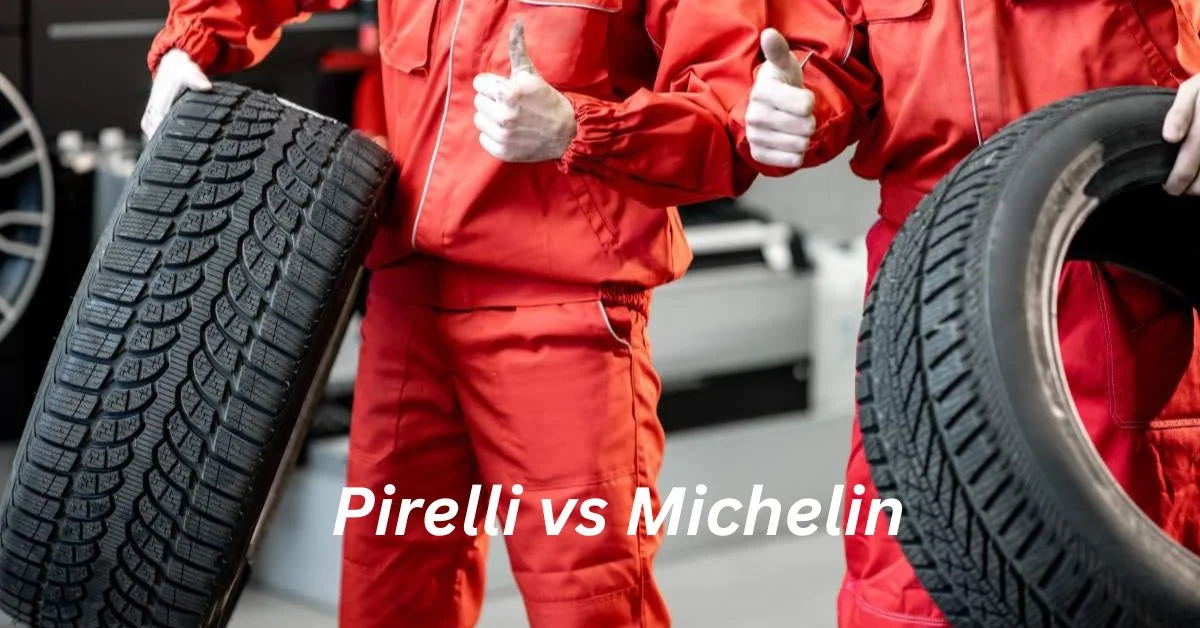
Introduction
Choosing the right tire for your vehicle can be a daunting task. With numerous brands vying for your attention, making an informed decision is crucial for your safety, comfort, and vehicle performance. In this article, we’ll dive deep into comparing two tire giants: Pirelli vs Michelin. By examining their history, product range, technology, performance, pricing, customer satisfaction, and environmental impact, we aim to help you decide which brand is best for your vehicle.
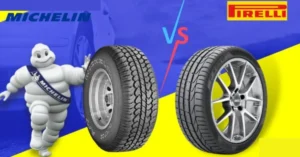
Brand History and Reputation
Pirelli: A Legacy of Performance
Origins and Evolution
Pirelli, founded in 1872 by Giovanni Battista Pirelli, started as a small rubber manufacturer in Milan, Italy. Over the years, Pirelli has evolved into one of the world’s leading tire manufacturers, known for its cutting-edge technology and high-performance tires. The brand’s rich history is marked by numerous innovations and contributions to the automotive industry.
Innovations and Achievements
Pirelli has always been at the forefront of tire technology. The introduction of the Cinturato radial tire in the 1950s revolutionized the tire industry. Pirelli’s commitment to motorsport, particularly in Formula 1, has further solidified its reputation for performance and excellence.
Michelin: Leading Through Innovation
Founding and Growth
Michelin was founded in 1889 by brothers Édouard and André Michelin in Clermont-Ferrand, France. From its humble beginnings, Michelin has grown into a global tire industry leader, known for its relentless pursuit of innovation and quality.
Key Milestones and Contributions
Michelin’s introduction of the radial tire in 1946 was a game-changer for the industry, providing improved safety, performance, and longevity. The brand’s dedication to innovation is evident in its extensive research and development efforts, leading to numerous groundbreaking technologies.
Product Range and Offerings of Pirelli vs Michelin
Pirelli Tire Range
Performance Tires
Pirelli offers a wide range of high-performance tires designed for sports cars and luxury vehicles. The P Zero series, known for its exceptional grip and handling, is a popular choice among enthusiasts.
All-Season Tires
Pirelli’s all-season tires, such as the Scorpion Verde, provide a balanced performance in various weather conditions, ensuring safety and comfort year-round.
Specialty Tires
Pirelli also caters to niche markets with specialty tires for motorcycles, bicycles, and commercial vehicles, showcasing its versatility and expertise.
Michelin Tire Range
Performance Tires
Michelin’s Pilot Sport series is renowned for its high-performance capabilities, offering superior grip, stability, and control, making it a top choice for performance-oriented drivers.
All-Season Tires
The Michelin CrossClimate series is designed to deliver excellent performance in diverse weather conditions, providing a safe and comfortable ride throughout the year.
Specialty Tires
Michelin’s extensive range of specialty tires includes options for motorcycles, aircraft, and heavy-duty trucks, demonstrating the brand’s comprehensive expertise in tire manufacturing.
Pirelli vs Michelin Technology and Innovation
Pirelli’s Technological Advances
Run-Flat Technology
Pirelli’s Run-Flat tires are engineered to maintain stability and control even after a puncture, allowing drivers to continue their journey safely to a repair shop.
Noise Cancelling System
Pirelli’s Noise Cancelling System (PNCS) significantly reduces road noise, enhancing the driving experience by providing a quieter ride.
Michelin’s Technological Prowess
EverGrip Technology
Michelin’s EverGrip technology ensures consistent performance throughout the tire’s lifespan, providing exceptional grip even as the tire wears down.
Selfseal Technology
Michelin’s Selfseal technology automatically seals punctures up to 6mm in diameter, reducing the risk of flat tires and enhancing safety.
Pirelli vs Michelin Performance and Durability
Pirelli’s Performance in Different Conditions
Dry Conditions
Pirelli tires are known for their exceptional performance in dry conditions, offering superb grip, precise handling, and a sporty driving experience.
Wet Conditions
Pirelli’s innovative tread patterns and rubber compounds provide excellent traction and control in wet conditions, reducing the risk of hydroplaning.
Michelin’s Performance in Different Conditions
Dry Conditions
Michelin tires deliver outstanding performance in dry conditions, with a focus on stability, handling, and braking performance.
Wet Conditions
Michelin’s advanced tread designs and rubber technologies ensure superior traction and control in wet conditions, enhancing safety and confidence.
Pricing and Value for Money
Pirelli’s Pricing Structure
Pirelli tires are generally positioned in the premium segment, reflecting their high-performance capabilities and advanced technologies. While they may come with a higher price tag, the value they offer in terms of performance and safety is significant.
Michelin’s Pricing Structure
Michelin tires also fall into the premium category, known for their durability, performance, and innovative features. The slightly higher cost is often justified by the longevity and reliability of Michelin tires.
Comparative Value Analysis
When comparing the value for money, both Pirelli and Michelin offer excellent products, each with unique strengths. The choice ultimately depends on individual preferences, driving conditions, and specific vehicle requirements.
Customer Reviews and Satisfaction
Pirelli Customer Feedback
Pirelli customers often praise the brand for its exceptional performance, especially in high-speed and high-performance scenarios. The tires’ durability and comfort also receive positive reviews, though some note the premium pricing as a consideration.
Michelin Customer Feedback
Michelin enjoys a strong reputation for reliability and longevity, with customers frequently highlighting the tires’ performance across various conditions. The consistent quality and innovative features are also common points of praise.
Pirelli vs Michelin Environmental Impact and Sustainability
Pirelli’s Sustainability Initiatives
Pirelli is committed to sustainability, focusing on reducing its environmental footprint through eco-friendly manufacturing processes and materials. The company’s initiatives include reducing CO2 emissions and promoting tire recycling.
Michelin’s Green Technologies
Michelin leads the way in sustainability with its focus on green technologies. The brand’s commitment to reducing environmental impact includes using renewable materials, enhancing fuel efficiency, and minimizing waste throughout the tire lifecycle.
Conclusion
In the battle of Pirelli vs Michelin, both brands showcase their strengths and unique features, making them top contenders in the tire industry. Pirelli excels in high-performance scenarios, offering advanced technologies and sporty driving experiences. Michelin stands out for its innovation, durability, and sustainability efforts. The best choice for your vehicle depends on your specific needs, driving habits, and preferences. Whether you prioritize performance, longevity, or environmental impact, both Pirelli and Michelin have excellent options to offer.
FAQs
Which brand is better for high-performance vehicles?
Pirelli is often favored for high-performance vehicles due to its exceptional grip and handling characteristics, particularly in dry conditions.
Are Michelin tires more expensive than Pirelli?
Both brands fall into the premium pricing category, but specific prices can vary based on the tire model and size. Generally, Michelin tires are known for their longevity, which can justify the cost.
How do Pirelli and Michelin compare in terms of warranty?
Both brands offer comprehensive warranties, but the specifics can vary. It’s essential to review the warranty details for each tire model to understand the coverage.
Which brand is more environmentally friendly?
Michelin is often recognized for its strong commitment to sustainability, with various initiatives focused on reducing environmental impact. Pirelli also has significant sustainability efforts, making both brands commendable in this aspect.
What are the unique features of each brand?
Pirelli is known for its Run-Flat and Noise Cancelling System technologies, while Michelin is famous for EverGrip and Selfseal technologies. Each brand’s unique features cater to different driving needs and preferences.
Automotive
Honda Accepting Bitcoin: A New Era in Car Payments
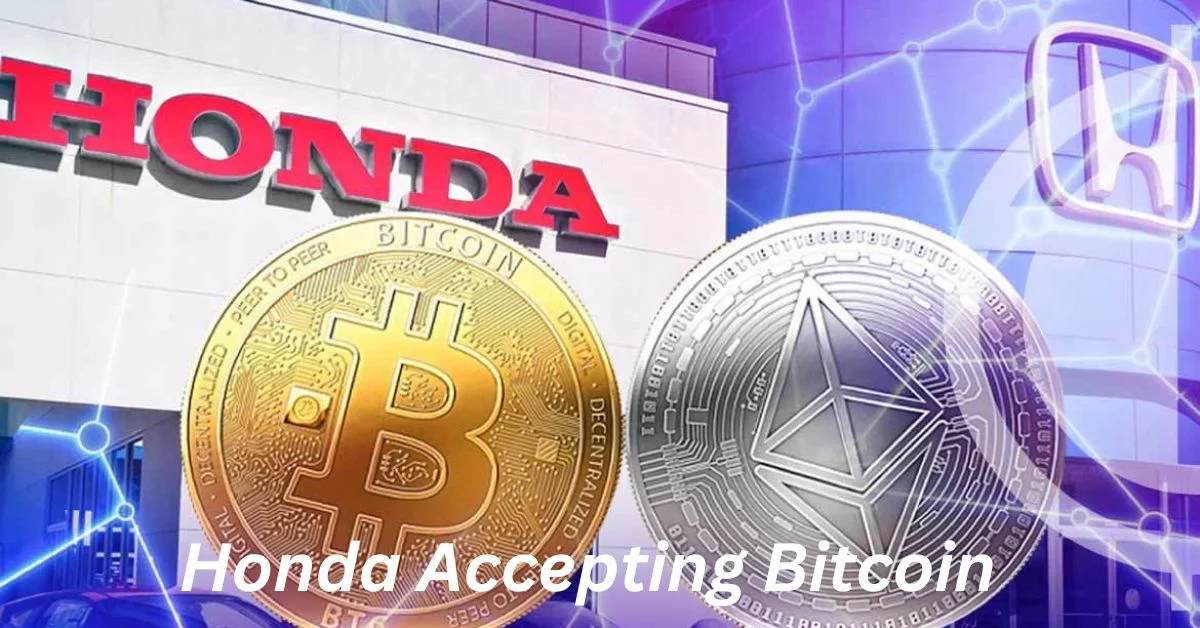
Introduction
Why Cryptocurrency Matters in Today’s Economy
Cryptocurrency is not just a trend; it’s a revolutionary force reshaping economies and financial systems worldwide. With Bitcoin leading the charge, digital currencies are gaining traction as a viable means of exchange. As more businesses begin to accept cryptocurrency, its influence grows, pushing the boundaries of what we once considered possible in the world of finance.
Honda Move to Accepting Bitcoin
Understanding Honda’s Decision
Honda’s recent decision to accept Bitcoin as a form of payment is a bold move that positions the company at the forefront of innovation in the automotive industry. By embracing cryptocurrency, Honda recognizes the growing demand for alternative payment methods and the importance of staying ahead of the curve in an increasingly digital world. This decision is not just about keeping up with trends; it’s a strategic move to attract a new generation of tech-savvy consumers.
How Honda Plans to Implement Bitcoin Payments
The Role of Blockchain Technology
Blockchain technology, the backbone of Bitcoin and other cryptocurrencies, ensures that all transactions are transparent, secure, and immutable. Honda’s adoption of Bitcoin leverages this technology to provide customers with a reliable and secure payment option. By integrating blockchain into its payment systems, Honda ensures that every transaction is recorded in a decentralized ledger, making it nearly impossible for fraud or manipulation to occur.
Security Measures for Bitcoin Transactions
Security is a top priority for Honda as it rolls out Bitcoin payments. The company has implemented robust security protocols to protect both the buyer and the company from potential risks. These measures include multi-signature wallets, cold storage for holding Bitcoin, and real-time monitoring of transactions to detect and prevent any suspicious activity. By prioritizing security, Honda aims to build trust with its customers and encourage widespread adoption of Bitcoin as a payment method.
The Impact on the Automotive Industry
How This Affects Car Buyers
Honda’s acceptance of Bitcoin offers car buyers a new level of flexibility and convenience. For those who have invested in Bitcoin and watched its value soar, the ability to purchase a car with their digital assets is a significant advantage. This move also opens up the market to international buyers, as Bitcoin transactions are not bound by geographical borders or currency exchange rates. However, it’s essential for buyers to understand the potential risks and rewards associated with using Bitcoin for large purchases.
Potential Challenges and Benefits
Benefits for Early Bitcoin Adopters
Early adopters of Bitcoin stand to benefit the most from Honda’s decision. Those who invested in Bitcoin when it was relatively unknown now have the opportunity to use their gains to purchase high-value items like cars. This can be particularly appealing for investors looking to diversify their assets or convert their digital wealth into tangible goods.
Challenges for Traditional Buyers
On the flip side, traditional buyers who prefer cash or credit may face challenges as more companies, including Honda, start accepting Bitcoin. The fluctuating value of Bitcoin can make it difficult to determine the exact cost of a car at the time of purchase, leading to potential confusion or frustration. Additionally, those unfamiliar with cryptocurrency may feel left out or pressured to adapt to a new payment method that they don’t fully understand.
Comparing Honda with Competitors
Who Else Is Accepting Cryptocurrency?
Honda is not the only automotive company to embrace cryptocurrency. Several other industry leaders have also started accepting Bitcoin and other digital currencies as payment. Companies like Tesla and BMW have made headlines with their forays into the world of cryptocurrency, signaling a broader trend within the industry. However, each company’s approach varies, with some offering more flexibility or different cryptocurrency options than others.
How Honda’s Approach Differs
Honda’s approach to accepting Bitcoin is unique in its emphasis on security and customer education. The company has gone to great lengths to ensure that its customers understand the risks and benefits of using Bitcoin for car purchases. Additionally, Honda has invested in creating a seamless and user-friendly process that integrates Bitcoin payments into its existing systems without disrupting the customer experience. This commitment to innovation and customer satisfaction sets Honda apart from its competitors in the cryptocurrency space.
What This Means for Bitcoin Holders
Increased Utility for Bitcoin
For Bitcoin holders, Honda’s acceptance of cryptocurrency represents a significant milestone. It increases the utility of Bitcoin, allowing it to be used for more than just online transactions or speculative investment. By accepting Bitcoin for car purchases, Honda is helping to legitimize the currency and encouraging its adoption in everyday life.
Long-Term Investment Considerations
Bitcoin’s value can be volatile, which presents both opportunities and risks for long-term investors. Those considering using Bitcoin to purchase a Honda should carefully weigh the potential for future gains against the immediate benefits of acquiring a new vehicle. While Bitcoin’s value could increase after a purchase, there’s also the possibility of a decline, which could lead to buyer’s remorse if the currency becomes more valuable later on.
The Future of Car Payments
Will Other Automakers Follow Suit?
Honda’s decision to accept Bitcoin may be the start of a broader trend within the automotive industry. As more consumers become comfortable with cryptocurrency, other automakers may feel pressured to offer similar payment options. This could lead to a more competitive market, with companies vying to attract tech-savvy buyers who prefer to use digital currencies.
The Role of Cryptocurrency in the Future Economy
Potential Risks
While cryptocurrency has the potential to revolutionize the economy, it’s not without risks. The decentralized nature of Bitcoin makes it difficult for governments to regulate, which could lead to legal challenges or fluctuations in value. Additionally, the environmental impact of Bitcoin mining is a growing concern that could influence its adoption by both consumers and businesses.
Potential Rewards
Despite these risks, the rewards of adopting cryptocurrency are significant. For companies like Honda, accepting Bitcoin offers a way to differentiate themselves from competitors and appeal to a new generation of consumers. For buyers, using Bitcoin can provide a sense of financial freedom and the ability to make purchases without relying on traditional banking systems.
How to Buy a Honda with Bitcoin
Step-by-Step Guide
Setting Up a Bitcoin Wallet
The first step in buying a Honda with Bitcoin is setting up a Bitcoin wallet. This digital wallet allows you to store, send, and receive Bitcoin securely. There are several types of wallets available, including hardware wallets, mobile wallets, and online wallets. Each has its pros and cons, so it’s essential to choose one that meets your needs.
Choosing Your Honda Model
Once your Bitcoin wallet is set up, you can browse Honda’s selection of vehicles to find the model that suits your preferences. Whether you’re looking for a fuel-efficient sedan, a rugged SUV, or a high-performance sports car, Honda offers a wide range of options to fit your lifestyle and budget.
Completing the Transaction
After selecting your vehicle, the next step is to complete the transaction. Honda’s sales team will guide you through the process, ensuring that your Bitcoin payment is processed smoothly and securely. Once the payment is confirmed, you’ll receive a receipt, and your new Honda will be ready for delivery or pickup.
Customer Experiences and Reviews
Testimonials from Early Adopters
Early adopters of Honda’s Bitcoin payment option have shared positive feedback, praising the convenience and security of the process. Many have expressed excitement about the ability to use their digital assets to purchase a car, highlighting the seamless integration of Bitcoin into Honda’s payment systems.
Feedback on the Buying Process
Customers have also commented on the ease of the buying process, noting that Honda’s team was knowledgeable and helpful in answering questions about cryptocurrency. The straightforward transaction process and the added security measures have made buying a Honda with Bitcoin a stress-free experience for many.
Conclusion
Honda’s decision to accept Bitcoin marks a significant step forward in the evolution of car payments. By embracing cryptocurrency, Honda is setting a precedent for other automakers and providing customers with a flexible and secure payment option. While there are challenges to consider, the potential benefits for both the company and its customers are substantial.
As the world of finance continues to evolve, Honda’s willingness to adapt and innovate is commendable. The company’s acceptance of Bitcoin not only reflects the growing importance of digital currencies but also positions Honda as a forward-thinking leader in the automotive industry. Whether you’re a Bitcoin enthusiast or a traditional buyer, Honda’s Bitcoin initiative offers something for everyone.
FAQs
Can I finance a Honda purchase with Bitcoin?
At this time, Honda’s Bitcoin payment option is only available for full purchases. Financing options are still handled through traditional methods, such as loans or leases.
What happens if Bitcoin’s value drops after purchase?
Once the transaction is completed, the price of the car is locked in, regardless of fluctuations in Bitcoin’s value. It’s essential to consider the potential volatility of Bitcoin when making a purchase.
Is it safe to buy a car with Bitcoin?
Yes, Honda has implemented robust security measures to ensure that Bitcoin transactions are safe and secure. These include multi-signature wallets, real-time monitoring, and cold storage for holding Bitcoin.
Will Honda accept other cryptocurrencies in the future?
While Bitcoin is the first cryptocurrency accepted by Honda, the company is open to exploring other digital currencies based on customer demand and market trends.
Automotive
Jeep Radio Code Recovery: Save Money with These Simple Tips
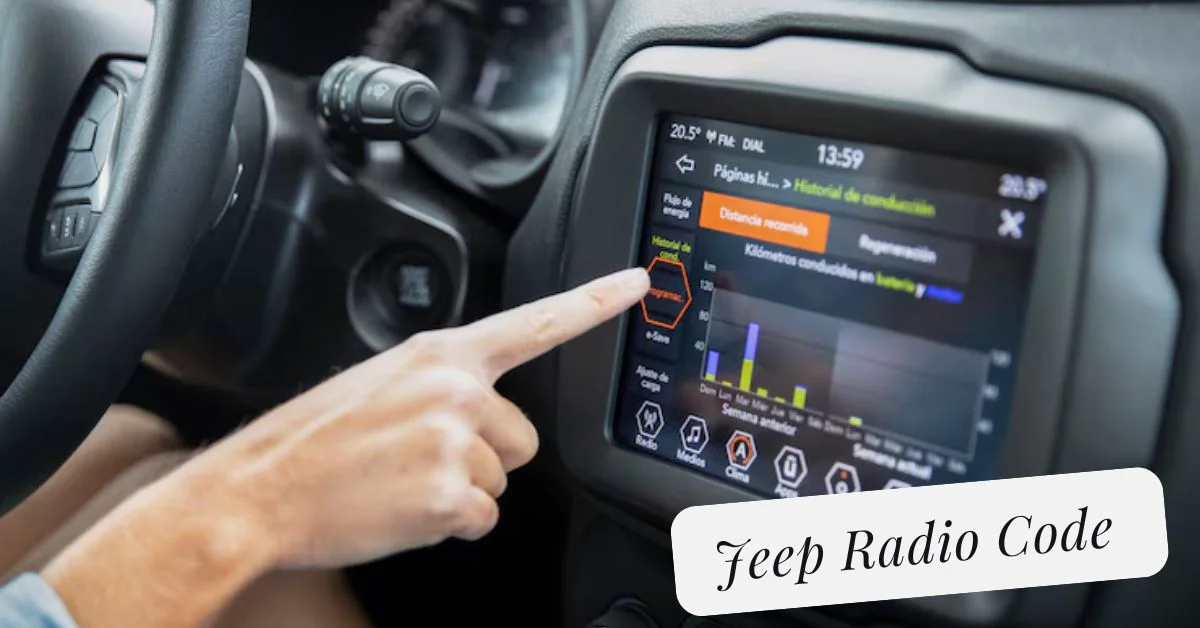
Introduction
Owning a Jeep is all about adventure and freedom, but nothing can put a damper on a road trip faster than losing access to your favorite tunes because your radio has locked you out. Whether due to a dead battery or a necessary replacement, you might find yourself needing a Jeep radio code to get your sound system back in action. But don’t worry! There are ways to recover this code without breaking the bank.
Understanding the Jeep Radio Code
What is a Jeep Radio Code?
A Jeep radio code is a unique security feature designed to prevent theft. If your radio loses power, it will often require this code to function again. It’s essentially a digital lock that ensures only you can use your radio.
Why Do You Need a Jeep Radio Code?
The radio code is essential to reactivate your Jeep’s audio system after any event that causes the system to reset, such as replacing the battery or disconnecting the radio for repairs. Without this code, your radio will remain locked, leaving you in silence.
When Might You Need to Retrieve It?
You might need to retrieve your Jeep radio code if:
- The battery has been disconnected or replaced.
- The radio has been removed for maintenance.
- You’ve purchased a used Jeep and the previous owner didn’t provide the code.
How to Find Your Jeep Radio Code
Locating the Radio Serial Number
To start, you’ll need to find the serial number of your Jeep’s radio. This is usually located on the radio itself, so you might need to remove the radio from the dashboard to see it. Some Jeep models allow you to access the serial number by holding down certain buttons on the radio while turning the ignition.
Using the VIN and Radio Device Number
Your Vehicle Identification Number (VIN) and radio device number can also help in retrieving your code. These numbers are crucial when contacting the dealership or using an online service to recover the radio code.
Checking Your Jeep’s Owner Manual
In some cases, the radio code may be written in your Jeep’s owner manual or on a card that came with the vehicle. It’s always worth checking here before exploring other options.
Getting the Jeep Radio Code from the Dealership
Contacting Your Local Jeep Dealership
One of the most straightforward methods to retrieve your Jeep radio code is to contact your local Jeep dealership. They have access to the manufacturer’s database and can provide you with the code.
What Information to Provide
When contacting the dealership, you’ll need to provide your Jeep’s VIN, the radio serial number, and possibly the radio device number. This information will allow them to locate the correct code for your vehicle.
Costs Associated with Dealership Services
However, this convenience comes at a price. Dealerships often charge over $50 for this service, which might not be the most cost-effective solution if you’re on a budget.
Budget-Friendly Alternatives to Recover Your Jeep Radio Code
Using Online Services
If you’re looking to save money, several online services can retrieve your Jeep radio code for a fraction of the cost. Websites like radiocodehelp.com offer this service for under $5.
Comparing Costs: Dealership vs. Online Services
While dealerships charge premium prices for radio code recovery, online services provide a more affordable alternative. It’s important to ensure that the online service you choose is reputable and has good reviews.
Step-by-Step Guide to Using an Online Radio Code Service
- Visit a trusted site like radiocodehelp.com.
- Enter your Jeep’s radio serial number, VIN, and other required details.
- Pay the small fee (usually under $5).
- Receive your radio code via email, usually within minutes.
DIY Jeep Radio Code Recovery
Is It Possible?
For those who are more tech-savvy, there are DIY methods to recover your Jeep radio code, but they come with risks.
Risks of DIY Methods
Attempting to retrieve the radio code without professional help can lead to incorrect codes, further lockouts, or even damaging your radio. This method is generally not recommended unless you have prior experience.
Tools You Might Need
If you decide to go the DIY route, you’ll need some basic tools, such as screwdrivers to remove the radio and possibly software to decode the serial number.
Common Mistakes to Avoid
Incorrect Serial Numbers
Make sure you accurately record the serial number of your radio. Entering the wrong number will result in the wrong code, which could lock your radio permanently.
Choosing Unreliable Online Services
Not all online services are trustworthy. Always check reviews and opt for services with secure payment methods to avoid scams.
Ignoring Free Solutions
Sometimes, the simplest solution is the best. Always check your owner’s manual or any documentation that came with your Jeep for the radio code before spending money.
How to Enter the Jeep Radio Code
Step-by-Step Instructions
- Turn on your Jeep’s radio. It should display “CODE” or a similar message.
- Use the preset buttons on the radio to enter the code. For example, if your code is 1234, press the 1st button once, the 2nd button twice, and so on.
- Press and hold the enter or confirm button.
- Your radio should unlock, allowing you to enjoy your music once again.
What to Do If the Code Doesn’t Work
If the code doesn’t work, double-check that you’ve entered it correctly. If it still doesn’t work, you might need to contact the service provider or dealership for further assistance.
Preventing Future Issues
Recording Your Radio Code
Once you have your radio code, write it down and keep it in a safe place. Consider storing it digitally for easy access.
Tips for Keeping Your Radio Code Safe
- Store the code in your phone’s notes app.
- Keep a physical copy in your glove compartment.
- Include the code in your vehicle’s maintenance records.
Regular Maintenance Tips to Avoid Lockouts
Regularly check your Jeep’s battery and electrical system to avoid unexpected power losses that can cause the radio to reset. Keeping your vehicle well-maintained can save you from the hassle of recovering your radio code in the future.
Conclusion
Recovering your Jeep radio code doesn’t have to be an expensive or stressful process. By following the tips outlined in this article, you can regain access to your radio quickly and affordably. Whether you choose to go through a dealership or opt for a budget-friendly online service, there are plenty of options to suit your needs.
FAQs
What should I do if I lost my Jeep radio code?
If you’ve lost your Jeep radio code, start by checking your owner’s manual or any documentation that came with your vehicle. If you can’t find it, you can contact a Jeep dealership or use an online service to recover it.
Can I recover my Jeep radio code for free?
In some cases, you may find the code for free in your owner’s manual or through documentation provided with your Jeep. Otherwise, using an online service or contacting a dealership will involve a fee.
How long does it take to get a Jeep radio code from a dealership?
The process can take anywhere from a few minutes to a few hours, depending on the dealership’s workload. Be prepared to provide necessary information like your VIN and radio serial number.
Is it safe to use online services for Jeep radio code recovery?
Yes, as long as you choose a reputable and secure service. Always check reviews and ensure the website uses secure payment methods.
What happens if I enter the wrong Jeep radio code multiple times?
Entering the wrong code multiple times can cause your radio to lock out completely. If this happens, you may need to wait a certain period or seek professional help to reset it.
Automotive
Porsche PSM Failure: What It Means and How to Address It
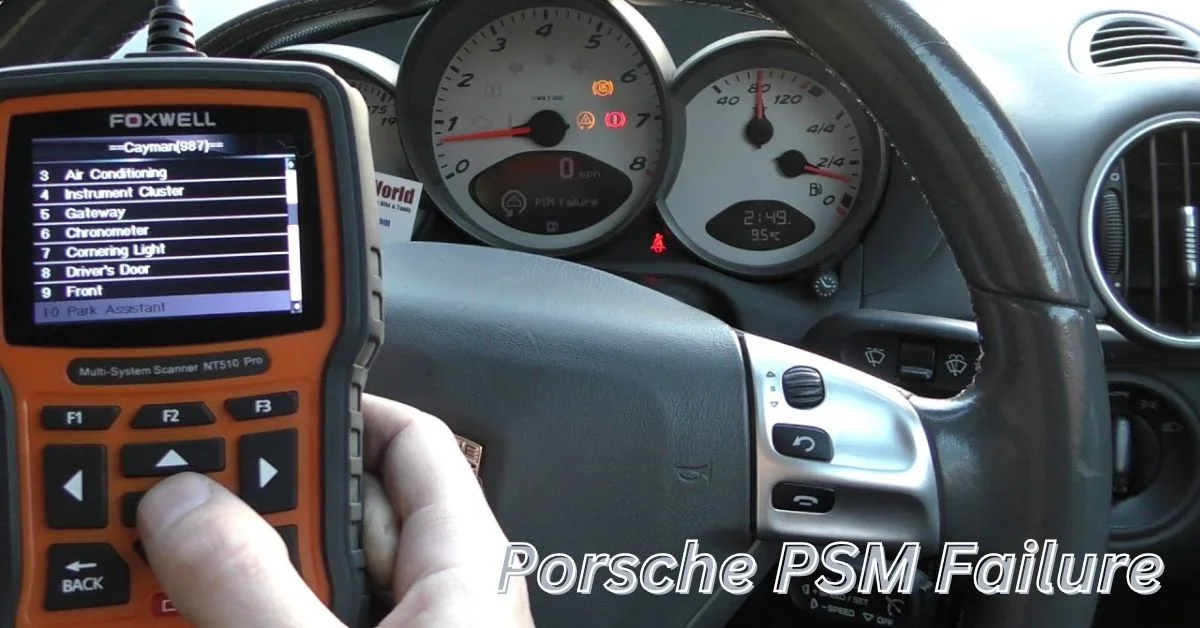
Introduction
If you own a Porsche, you’re likely familiar with the sophisticated technology that powers these high-performance vehicles. One of the critical systems in your Porsche is the Porsche Stability Management (PSM) system. This advanced feature ensures your vehicle remains stable and secure under various driving conditions. However, if you encounter a “Porsche PSM Failure” message on your dashboard, it’s important to understand what it means and how to resolve the issue. This article will delve into the PSM system, the reasons behind a PSM failure, and the steps you should take to address it.
What is Porsche PSM?
Porsche Stability Management (PSM) is an advanced electronic stability control system designed to enhance the handling and stability of your Porsche. It uses a combination of sensors and control algorithms to monitor and adjust various aspects of vehicle performance, including:
- Wheel Speed: Sensors measure the speed of each wheel to detect any discrepancies.
- Steering Angle: The system monitors the angle of the steering wheel to assess driver input.
- Yaw Rate: PSM measures the rate at which the vehicle is rotating around its vertical axis.
When the PSM system detects that the vehicle is deviating from the desired path, it can automatically apply braking to individual wheels or adjust engine power to help regain control and stabilize the car. This system is particularly useful in slippery conditions or during sudden maneuvers.
Causes of PSM Failure
Encountering a PSM failure message on your Porsche’s dashboard can be alarming. Understanding the potential causes behind this warning can help you address the issue promptly. Here are some common reasons for PSM failure:
1. Faulty Sensors
The PSM system relies on various sensors to gather data about the vehicle’s dynamics. If any of these sensors, such as wheel speed sensors or yaw rate sensors, become faulty or malfunction, it can trigger a PSM failure warning. Regular maintenance and prompt replacement of faulty sensors are essential to keep the system functioning correctly.
2. Electrical Issues
Electrical problems, such as loose connections or damaged wiring, can interfere with the operation of the PSM system. These issues can disrupt the communication between different components and lead to a failure warning. Inspecting the electrical connections and ensuring they are secure can help prevent such problems.
3. Software Glitches
Modern vehicles, including Porsches, rely on complex software to manage various systems. Software glitches or updates can sometimes affect the performance of the PSM system. In such cases, a software update or reflash may be required to resolve the issue.
4. Brake System Problems
Since the PSM system can apply braking force to individual wheels, any issues with the brake system, such as worn-out brake pads or low brake fluid levels, can impact the PSM’s performance. Regular brake maintenance is crucial to ensure the PSM system operates effectively.
5. Tire Issues
Tire conditions, including uneven wear or incorrect tire pressure, can affect the PSM system’s performance. The system relies on accurate wheel speed data, so maintaining proper tire pressure and alignment is essential for optimal functionality.
How to Address PSM Failure
When you encounter a PSM failure message, it’s important to address the issue promptly to ensure your vehicle’s safety and performance. Here are the steps you should take:
1. Check the Dashboard for Additional Warnings
The PSM failure message may be accompanied by other warning lights or messages on your dashboard. Pay attention to these additional warnings, as they can provide more information about the underlying issue.
2. Inspect the Vehicle
Perform a visual inspection of your vehicle, focusing on the following areas:
- Sensors: Check for any visible damage or dirt on the sensors.
- Electrical Connections: Ensure that all electrical connections are secure and free of corrosion.
- Brakes: Inspect the brake pads, fluid levels, and overall brake condition.
- Tires: Verify that the tires are properly inflated and evenly worn.
3. Consult a Professional
If you’re unable to identify or resolve the issue through a visual inspection, it’s best to consult a professional mechanic or Porsche service center. They can perform a thorough diagnostic to pinpoint the exact cause of the PSM failure and recommend the appropriate repairs or replacements.
4. Perform a Software Update
In cases where software glitches are suspected, a software update or reflash may be required. This task is best handled by a professional who can ensure that the latest software version is installed correctly.
5. Regular Maintenance
Preventive maintenance is key to avoiding PSM failures in the future. Regularly check and maintain your vehicle’s brake system, tires, and sensors to ensure that everything is in optimal working condition.
Preventing Future PSM Failures
To minimize the risk of PSM failure, consider the following preventive measures:
- Routine Inspections: Schedule regular inspections and maintenance for your Porsche to catch any potential issues early.
- Keep Tires in Good Condition: Regularly check tire pressure and alignment to ensure they are within the recommended specifications.
- Maintain the Brake System: Keep an eye on brake pad wear and brake fluid levels to prevent any problems that could affect the PSM system.
- Stay Updated: Ensure that your vehicle’s software is up to date to avoid potential glitches or compatibility issues.
Conclusion
The Porsche Stability Management (PSM) system is a crucial component of your vehicle’s safety and performance. When you encounter a “PSM failure” message, understanding the potential causes and taking the necessary steps to address the issue is essential for maintaining your Porsche’s optimal functionality. By staying informed and proactive about your vehicle’s maintenance, you can help prevent PSM failures and ensure a safe and enjoyable driving experience.
FAQs
What does the “PSM Failure” message on my Porsche’s dashboard mean?
The “PSM Failure” message indicates that there is a problem with the Porsche Stability Management (PSM) system. This system is designed to enhance vehicle stability and handling, especially in challenging driving conditions. When this message appears, it suggests that the PSM system is not functioning correctly and may require inspection or repair.
What are common causes of Porsche PSM failure?
Common causes of Porsche PSM failure include faulty sensors, electrical issues, software glitches, brake system problems, and tire issues. Each of these factors can disrupt the operation of the PSM system and trigger a failure message.
How can I diagnose the cause of a PSM failure?
To diagnose a PSM failure, start by checking for additional warning lights or messages on your dashboard. Perform a visual inspection of the sensors, electrical connections, brakes, and tires. If you cannot identify the issue, consult a professional mechanic or Porsche service center for a thorough diagnostic.
Can I drive my Porsche if the PSM system is failing?
It is not advisable to drive your Porsche if the PSM system is failing. The PSM system plays a crucial role in maintaining vehicle stability, especially under challenging conditions. Driving with a malfunctioning PSM system can compromise your safety and the vehicle’s performance.
How do I fix a PSM failure in my Porsche?
Fixing a PSM failure typically involves identifying and addressing the underlying issue. This may include replacing faulty sensors, repairing electrical connections, updating software, or addressing brake and tire problems. It is best to consult with a professional mechanic or Porsche service center for accurate diagnosis and repair.
-

 Fashion2 years ago
Fashion2 years agoExploring Purenudism: Embracing Body Positivity and Freedom
-

 Shops1 year ago
Shops1 year agoStaples Store Hours: What Time Does Staples Open And Close?
-

 Shops2 years ago
Shops2 years agoWalmart Vision Center Hours
-

 Shops1 year ago
Shops1 year agoWalgreen Pharmacy Hours: What Time Does It Open & Close?
-

 Shops1 year ago
Shops1 year agoPublix Pharmacy Hours and Locations
-

 Entertainment2 years ago
Entertainment2 years agoThothub.lol: The Digital Realm of Entertainment
-

 Business2 years ago
Business2 years agoDesigner Clothing: Making a Statement
-

 Shops1 year ago
Shops1 year agoWalmart Deli Open & Close Hours
